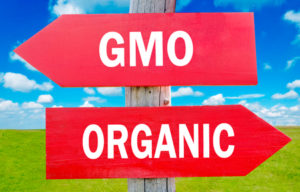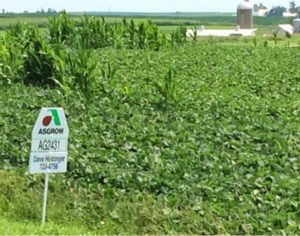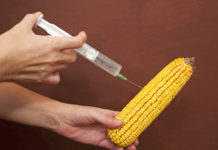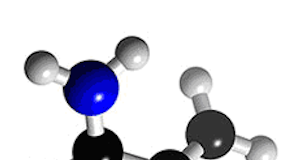For many years Monsanto and Friends have been saying that GMO crops (genetically modified organisms) and the chemicals they rely on, such as Roundup and glyphosate, are safe. In fact, they’re a bit infamous for actually suing organic farmers for patent infringement it the past — and winning!
Since 1997, just a year after Monsanto’s first GMO crop was approved by the FDA, the biotech company filed 150 lawsuits against family farmers. About 700 more were settled out of court. Since then, Monsanto has investigated more than 500 farmers annually!
 Today, however, the tide is finally shifting. Monsanto and Friends have started losing lawsuits from farmers that have had crops destroyed by GMO-related contamination. Monsanto & Friends may have started losing a little ground when it comes to GMO’s, but they are well on the way to new developments like nanotechnology that could eventually replace GMO’s, and We the People may have to start over.
Today, however, the tide is finally shifting. Monsanto and Friends have started losing lawsuits from farmers that have had crops destroyed by GMO-related contamination. Monsanto & Friends may have started losing a little ground when it comes to GMO’s, but they are well on the way to new developments like nanotechnology that could eventually replace GMO’s, and We the People may have to start over.
So, the Monsanto Mafia remains alive and well whatever short-term battles they lose. Some of their activities have been weakened but they are far from eliminated. They’ll always be working on the next technology to replace your real food with their laboratory experiments. There IS no “coexistence” with GMO crops or nanotechnologies. It just isn’t profitable enough for Monsanto! The real profit is in the patents on seeds and crops that come from their biotechnology — and that just cannot be allowed to compete with natural crops that have been growing just fine for millions of years.
The U.S. Dept. of Agriculture was working on a plan that to protect farmers from contamination of GMO crops — would you believe “contamination insurance!” The plan was to shift responsibility for GMO’s to farmers instead of Monsanto and its evil minions. This was of course based on a fundamental LIE — that GMO and conventional or organic crops can coexist. But the truth is that GMO pollen is spread by wind, insects, birds and animals so will eventually contaminate (i.e., think “destroy”) all organic and non-GMO crops. In fact, you can bet that Monsanto is counting on it!
“The hope of the industry is that over time the market is so flooded that there’s nothing you can do about it. You just sort of surrender.” – Biotech consultant Don Westfall, Toronto Star, 2001
In a recent press release from the USDA:
“The U.S. Department of Agriculture (USDA) on Wednesday released an Organic Farming Practices Fact Sheet, which said organic crop production losses due to contamination by drift of prohibited substances, such as genetically engineered crops like corn and soy, are not insurable”
Organic farmers have tried to find ways to protect themselves. For example, finding corn seeds that have resistance to cross fertilization by GMO pollen. This may offer some protection for organic corn but it is far from foolproof. Instead of trying to find ways to coexist with GMO’s, farmers need to take a stronger stand against GMO technologies that actually cannot co-exist when they can change the DNA of non-GMO crops until all are contaminated. This represents a permanent change to the environment worldwide…not just a new variety of corn or whatever. Its a very big deal!

GMO crops and their contamination. When they have the actually pay into a fund to help farmers recover all the costs of GMO contamination maybe they’ll discover that GMO crops are far less profitable when you actually have to pay for all the long term costs to the marketplace, the farmers and the consumers around the world.
The responsibility for preventing contamination should NEVER be shared with farmers. That was an idea created by Monsanto & Friends! Non-GMO and organic farmers shouldn’t have to protect themselves from GMO’s at all. The idea of creating buffer zones and other nonsense was all Monsanto’s, to make it look like they don’t own all responsibility for the environmental impact of GMO’s through GMO-drift on the wind or whatever. If Monsanto is successful at setting a legal precedent that non-GMO farmers bear some responsibility for GMO contamination, it may spell the end of non-GMO and organic crops.
Contamination is definitely already occurring and is the most frequent reason for crops being rejected by buyers — which has already happened in China, of all places, when they rejected organic corn shipments that tested positive for GMO’s. And when the weather is particularly bad (high winds, storms, etc.) the risks of contamination goes way up, regardless of “buffer zones” and other nonsense promoted by Monsanto & Friends.
Costs of contamination are imposed at the marketing level as well as at the farm level. Growers, co-ops and grain marketing organizations incur many costs as well. Testing programs can costs thousands of dollars a year for farmers or co-ops. If contamination is discovered then crops can no longer be sold for the original intended use. Then farmers have to sell the contaminated GMO crops for animal feed — which is far less profitable for the farmer — after they already spent a small fortune to certify and grow organic crops. GMO animal feed is also highly objectionable to people who don’t want to to be part of anything GMO.
Every contaminated load of GMO crops can cost farmers thousands of dollars if it has to be shipped back to the farm and then on to a different, less discerning buyer. So some farmers just go straight to the animal feed markets to reduce the hassle of trying to sell in markets with rigorous GMO testing. Needless to say, I don’t support the use of GMO’s for animals either!
Ultimately it is unrealistic to expect this issue to be resolved in the marketplace, which is just what GMO companies really want.
More Resources:
https://rawfoodlife.com/10-reasons-why-no-GMO
http://action.fooddemocracynow.org/go/1220?t=7&akid=1174.952702.0tBJpz
http://action.fooddemocracynow.org/go/1217?t=12&akid=1174.952702.0tBJpz
http://action.fooddemocracynow.org/go/1218?t=14&akid=1174.952702.0tBJpz
Revised & updated June, 2017.
Also read:
Disadvantages of Genetically Modified Crops (GMOs) – Don’t Believe the Industry Hype!

















